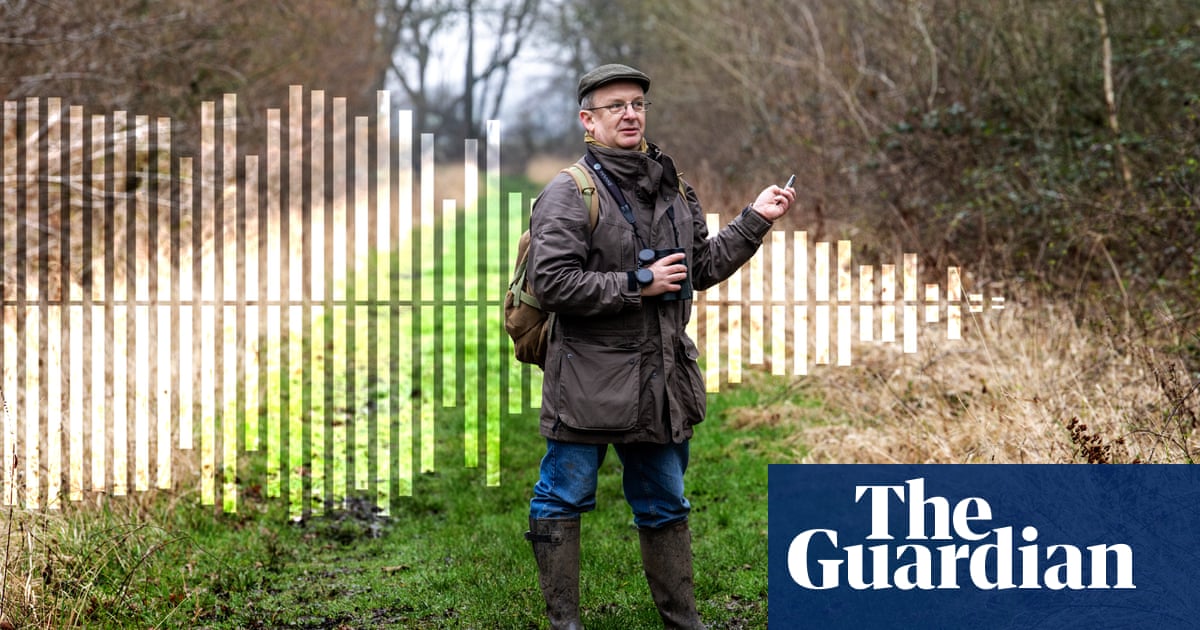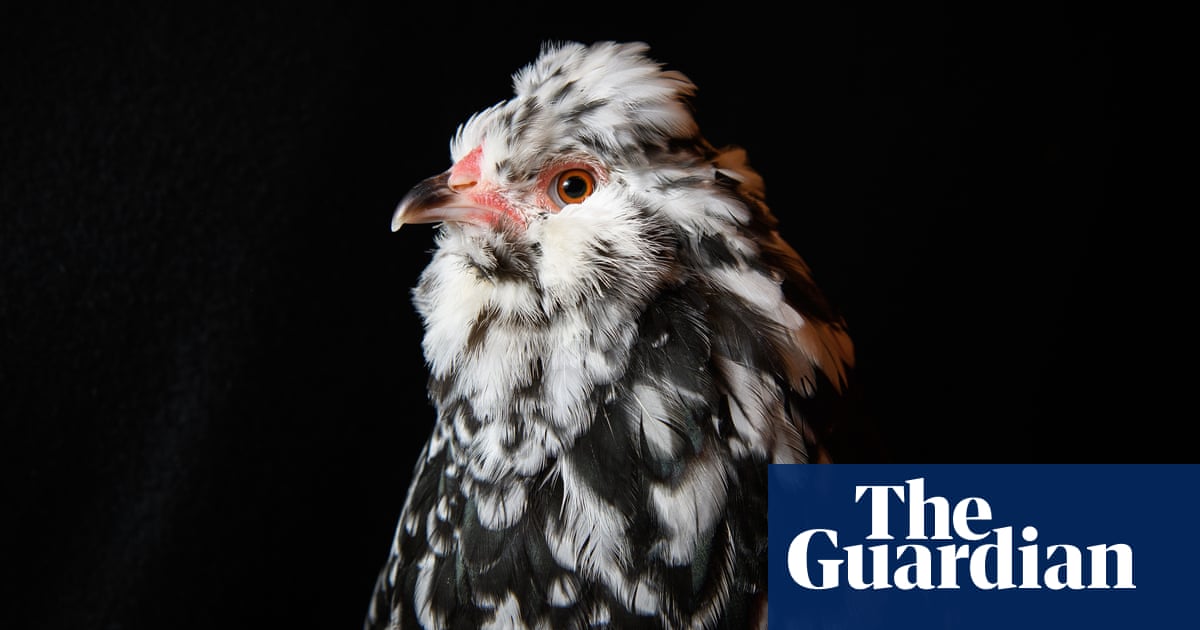Richard Broughton has been nosing around this neighbourhood for 22 years. He gossips about inhabitants past and present, reeling off information about their relationship status, openness to visitors, brawls and neighbourly disputes. âThey used to have a big punch up in spring here,â he says, pointing out where one familyâs territory ends and the next begins.
Some areas are eerily quiet, with popular old haunts lying uninhabited. âI always get a bit of a pang now, walking through here and itâs empty. Itâs like walking down your local high street and seeing your favourite shops are closed and the pub is boarded up.â
Broughtonâs domain is not a city block but an ancient woodland called Monks Wood, in Cambridgeshire. The inhabitants are marsh tits: tiny songbirds, each weighing about the same as two sheets of A4 paper.
Broughton holds up an old Nokia phone and plays a warning call. The bird heâs searching for is a kind of avian Hugh Hefner: nine years old in May and currently hitched up with a one-year-old. He quickly comes to inspect Broughton. Marsh tits are plucky and territorial, with a distinctive black cap and Inspector Clouseau-style moustaches â as soon as they hear the alarm call they race to investigate.
Soon, however, the calls of this family network of birds may only exist in the plastic casing of Broughtonâs Nokia. More than 70 million birds have disappeared from the UKâs skies since 1970. The delicate calls of marsh tits â and other songbirds â are becoming harder to find, as populations plummet. The story from this wood is being played out nationally, as human noise gets louder and the sounds of nature vanish.
Broughton, who works at the UK Centre for Ecology and Hydrology, is Britainâs leading expert on these woodlands, and this family of marsh tits has been studied in more detail and for longer than any others in the country. The sound Broughton is playing is the noise of a bird he recorded 20 years ago. During that time he has attached coloured bands to the legs of more than 1,600 marsh tits to identify them. Only 1.7% of those birds are still alive.
The project was set up in 2002 to study the then-thriving population, but they started seriously declining 10 years in. When he started the study there were 22 pairs in this wood. Last year there were fewer than 10. The UK breeding population has declined by 80% in the last 55 years, so these encounters are increasingly rare.
By 2042 the population is projected to be zero. âWe know whatâs coming. Within my lifetime they will probably disappear. It can be distressing to watch because you get to know their lives and relationships,â says Broughton.
The decline of these birds is a case study in how increasing human activity can drive a species toward extinction. Their dwindling numbers are partly driven by growing competition from blue tits and great tits, which are benefiting from being fed by humans in their gardens (marsh tits wouldnât venture into peopleâs gardens for food).
Then there are the declines of insects â a crucial food source. The birds rely on hawthorn-dwelling caterpillars to get in good condition for spring and then feed their freshly hatched young â but climate breakdown now means the hawthorn is coming into leaf long before the birds would normally be nesting. This woodland is a small island of suitable habitat surrounded by intensively farmed arable land. Marsh tits will not fly over open farmland, they only follow hedges and woodlands, so this population is becoming increasingly isolated and incestuous.
The study is also a microcosm of whatâs happening more widely. On average there are 37% fewer woodland birds in our woods compared with 1970, with declines accelerating in the past five years.
âThese birds are telling us that something serious is happening in the woods,â says Broughton. When he first came to the wood in 1999 there were nightingales, willow tits, hawfinches and lesser-spotted woodpeckers â birds that had been here for hundreds or thousands of years. âNow theyâve all gone,â he says. âMarsh tits will probably be next.â The removal of hedges, woodlands and increased numbers of deer are all reducing the size and quality of their habitats.
We spot Hefner 200 metres from where he was first ringed, nearly a decade ago. This five hectares (12 acres) of wood is this old maleâs entire universe; heâs probably never left it, and knows it inside-out, right down to every tree and shrub. Over winter he will hide tens of thousands of seeds, a bit like a squirrel. âIf theyâre not on their territory theyâre dead,â says Broughton. In that sense, theyâre easy to monitor.
In the neighbouring territory there was a love story with a pair that were together for eight years. They were never apart. Then, one day, she disappeared. âIt brought a lump to my throat,â says Broughton. The male appeared bereft, and didnât pair up with the available females around him. Two months later he died too.
Broughton says he sometimes finds it hard to conduct science and see this happening on our watch. The wood is full of memories of particular birds, families and nests that are now long gone. âThere is an emotional toll. I canât feel neutral about it, I canât just treat them as datapoints,â he says. âItâs my own âsilent springâ.â
Find more age of extinction coverage here, and follow biodiversity reporters Phoebe Weston and Patrick Greenfield on X for all the latest news and features



